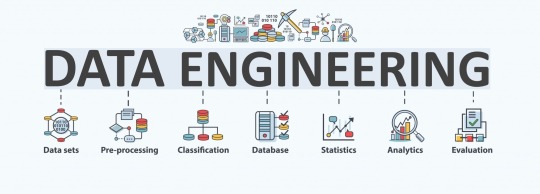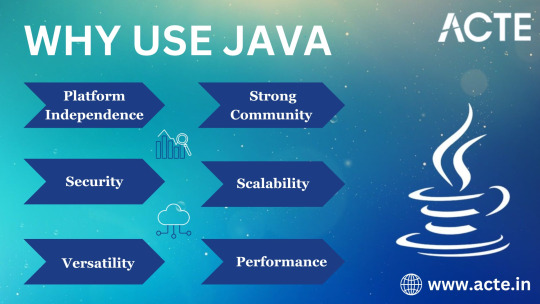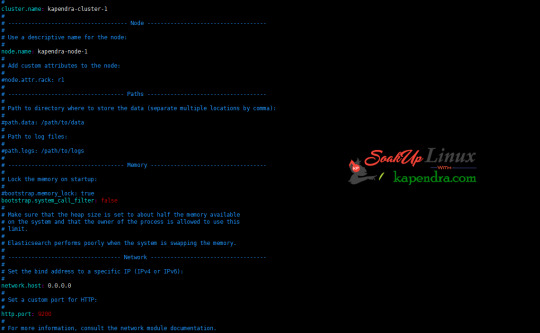#Java runtime environment
Explore tagged Tumblr posts
Text
Does learning Java increase my salary?
1. Introduction to the Java Job Market
Java is still one of the hottest programming languages out there. Whether you're just starting or have been coding for a while, knowing Java can really help your career. A common question is: Does learning Java boost my paycheck? The answer is yes—companies really want people who know Java because it's so flexible for web, mobile, and big business apps. Key topics include Java programming, Java developers, and job roles related to it.
Key Point: Java skills are in demand across different industries and can help increase your salary.
2. Java's Popularity and Market Demand
Big names like Amazon, Netflix, and Google use Java because it handles large-scale apps well. So, does learning Java increase my salary? Definitely. Employers will pay a premium for those who are good at Java. Key terms include Java software development, full stack, and backend developer.
Key Point: There’s a strong demand for Java devs, which leads to better pay and job security.
3. Java Skills and Salary Growth
Having Java skills gives you an edge. Companies are looking for people who know frameworks like Spring Boot and tools like Maven. Will learning Java increase my salary? For sure. With the right certifications and experience, you can earn more. And signing up for a Java course in Coimbatore can really help solidify your skills.
Key Point: Specialized Java knowledge can lead to promotions and salary increases.
4. Role of Certifications in Salary Hike
Getting a Java certification is a smart way to stand out. A lot of people choose the Java Full Stack Developer Course in Coimbatore for hands-on practice. Certifications prove your skills, and the answer to the question: Does learning Java bump up my salary? Yes.
Key Point: Java certifications help validate your skills and can lead to better pay.
5. Java Job Roles and Their Pay Scales
Java jobs range from junior developers to senior architects, and each level comes with higher pay. A Java training in Coimbatore can get you ready for roles like Full Stack Developer or Software Engineer. Is there a salary increase if you learn Java? Absolutely, especially for specialized roles.
Key Point: There are many roles in Java, and each offers attractive salary packages.
6. Java vs. Other Programming Languages in Salary
Java developers often earn more than those working with less popular languages. Unlike some newer languages, Java jobs tend to be more stable. Does learning Java mean better pay? Yes, compared to other languages, Java usually offers more consistent salaries.
Key Point: Java's long-standing presence in the industry generally means better pay than many newer languages.
7. Full Stack Java Developer Salary Benefits
Full Stack Java Developers are among the best paid in tech. Taking a Java Full Stack Developer Course in Coimbatore can prepare you for the job market. Will learning Java increase my salary? For sure—especially in full stack roles where you need to be skilled in both backend and frontend.
Key Point: Full Stack Java positions offer top salaries and are in high demand.
8. Java's Role in Enterprise Applications
Java is key for many enterprise systems. Learning enterprise-level Java can really answer the question: Does it help me earn more? Yes. A training program in Coimbatore that teaches things like Hibernate and JSP is worth considering.
Key Point: Skills in enterprise Java can set you up for well-paying jobs.
9. Local Training Institutes and Career Impact
Joining a local Java course in Coimbatore can boost your earnings. These programs offer hands-on projects and guidance from experts. So, does learning Java help with salary? Yes—local training can lead to quicker job growth.
Key Point: Local Java training can speed up your skills and help with job placements.
10. Final Thoughts and Brand Mention
In summary, does learning Java increase my salary? Yes, through certifications, full stack skills, and local training. Consider a reputable place like Xplore It Corp for training in Coimbatore, offering courses designed to meet job market needs.
Key Point: Xplore It Corp provides practical Java courses that can help you earn more.
FAQs:
1. Does learning Java help me earn more with no experience?
Yes. Even beginners can get better job offers after certified Java training.
2. What’s the average salary after a Java course in Coimbatore?
Freshers typically earn around ₹3-5 LPA, and pay can increase significantly after 1-2 years.
3. Is a Java Full Stack Developer Course in Coimbatore worth it?
Definitely. Full stack developers are in demand and usually earn 20-30% more.
4. How long before I see salary benefits after Java training?
Usually, you can expect to see salary increases within 6-12 months after completing the course.
5. Can I switch to Java and expect a pay increase?
Yes. Many people move from non-tech jobs to Java and see a boost in their salary.
#Java programming#Java developer#Java applications#Core Java#Java certification#Java frameworks#Spring Framework#Java full stack#Java backend developer#Java software development#Java training course#Java job roles#Object-oriented programming#Java IDE#Java runtime environment#Java REST API#J2EE#Java vs Python#Java vs JavaScript#Secure Java coding#Java deployment#Java enterprise solutions#Java bootcamp#Java multithreading#Java performance optimization
0 notes
Text
i wanna go back to a time in the past where JRE stood for java runtime environment and not joe rogan experiment
20 notes
·
View notes
Text
i did not "learn" about Java Runtime Environment and programming language I have simply known about it for as long as I can remember
25 notes
·
View notes
Text
Best IT Courses In Bhubaneswar:- seeree services pvt ltd.
Introduction:- seeree is one of the best IT training institute and Software industry, features completely Industrial training on Python , PHP , .NET , C Programming,Java , IOT , AI , GD PI , ORACLE and ALL CERTIFICATION COURSES as well as provides seminar,cultural activity and jobs
Courses we provided:- 1) Java Fullstack 2) Python Fullstack 3) PHP Fullstack 4) Preplacement Training & Sp. Eng 5) .NET Fulstack 6) SEO/Digital Marketing 7) SAP 8) MERN 9) Software Testing 10)Data Analyst 11)Data Science 12)Data Engineering 13)PGDCA 14)Tally 15)Graphics Design
Course1:- Java Fullstack

A Class in Java is where we teach objects how to behave. Education at seeree means way to success. The way of teaching by corporate trainers will bloom your career. We have the best java training classes in Bhubaneswar. 100% Placement Support. Job Support Post Training. This course will give you a firm foundation in Java, commonly used programming language. Java technology is wide used currently. Java is a programming language and it is a platform. Hardware or software environment in which a program runs, known as a platform. Since Java has its own Runtime Environment (JRE) and API, it is called platform. Java programming language is designed to meet the challenges of application development in the context of heterogeneous, network-wide distributed environment. Java is an object-oriented programming (OOP) language that uses many common elements from other OOP languages, such as C++. Java is a complete platform for software development. Java is suitable for enterprise large scale applications.]
Course2:- Python Fullstack

Seeree offers best python course in Bhubaneswar with 100% job assurance and low fee. Learn from real time corporate trainers and experienced faculties. Groom your personality with our faculty. Seeree helps to build confidence in students to give exposure to their skills to the company.
Python is dynamically typed , compiled and interpreted , procedural and object oriented , generalized , general-purpose , platform independent programming language. Python is a high-level, structured, open-source programming language that can be used for a wide variety of programming tasks.
Course3:- PHP Fullstack

seeree is the best training institute which provide PHP Training courses in bhubaneswar and all over odisha We aim the students to learn and grow altogether with the need of IT firms.
PHP is a server scripting language, and a powerful tool for making dynamic and interactive Web pages. PHP is a widely-used, free, and efficient alternative to competitors such as Microsoft's ASP.
Course4:- Preplacement Training & Sp. Eng

Welcome to SEEREE Institute, where excellence meets opportunity. At SEEREE, we are dedicated to providing a transformative learning experience that empowers students to achieve their goals and contribute to a brighter future.
Our institute offers cutting-edge courses designed to meet the needs of the ever-evolving global landscape. With a team of highly qualified instructors and state-of-the-art facilities, we ensure a supportive and inspiring environment for learning and growth.
Whether you're here to develop new skills, explore innovative fields, or pursue personal and professional success, SEEREE Institute is the perfect place to begin your journey. Thank you for choosing us, and we look forward to being a part of your success story.
Course5:- .NET Fullstack

Seeree offers best .NET course in Bhubaneswar with 100% job assurance and low fee. Learn from real time corporate trainers and experienced faculties. Groom your personality with our faculty. Seeree helps to build confidence in students to give exposure to their skills to the company.
Course6:- SEO/Digital Marketing

In today's fast-paced digital world, businesses thrive on visibility, engagement, and strategic online presence. At SEEREE, we empower you with the skills and knowledge to master the art of Search Engine Optimization (SEO) and Digital Marketing.
Our comprehensive program is designed for beginners and professionals alike, covering everything from keyword research, on-page and off-page SEO, and content marketing, to social media strategies, PPC campaigns, and analytics.
With hands-on training, real-world projects, and guidance from industry experts, we ensure you're equipped to drive measurable results and excel in this dynamic field.
Join us at SEEREE Institute and take the first step towards becoming a leader in the digital marketing landscape!"
Course7:- SAP

SAP refers to Systems, Applications, and Products in Data Processing. Some of the most common subjects covered in these courses include human resource software administration, database management, and business training. Obtaining SAP certification can be done on a stand-alone basis or as part of a degree program.
Course8:- MERN

Seeree offers the best MERN course in Bhubaneswar with 100% job assurance and low fees. Learn from real-time corporate trainers and experienced faculty. Seeree helps students build confidence and gain skills to excel in company roles.
Are you ready to step into the exciting world of web development? At SEEREE, we bring you a comprehensive MERN Stack course that equips you with the skills to build modern, dynamic, and responsive web applications from start to finish.
The MERN Stack—comprising MongoDB, Express.js, React.js, and Node.js—is one of the most sought-after technologies in the web development industry. Our program is designed to help you master each component of the stack, from creating robust backends and managing databases to crafting dynamic frontends and seamless APIs.
Course9:- Software Testing

Seeree offers best Testing course in Bhubaneswar with 100% job assurance and low fee. Learn from real time corporate trainers and experienced faculties. Groom your personality with our faculty. Seeree helps to build confidence in students to give exposure to their skills to the company.
In the fast-paced world of software development, ensuring the quality and reliability of applications is crucial. At SEEREE, we offer a comprehensive Software Testing course designed to equip you with the skills and techniques needed to excel in this essential field.
Our program covers all aspects of software testing, from manual testing fundamentals to advanced automation tools and frameworks like Selenium, JIRA, and TestNG. You’ll learn to identify bugs, write test cases, execute test scripts, and ensure software meets high-quality standards.
With hands-on training, real-world scenarios, and guidance from experienced industry professionals, you’ll be prepared to take on roles like Quality Assurance Engineer, Test Analyst, and Automation Tester.
Join SEEREE Institute and gain the expertise to become a key player in delivering flawless software solutions. Your journey to a rewarding career in software testing starts here!"
Course10:- Data Analyst

Seeree offers the best Data Analyst course in Bhubaneswar with 100% job assurance and affordable fees. Our comprehensive curriculum is designed to cover all aspects of data analysis, from data collection and cleaning to advanced data visualization techniques. Learn from real-time corporate trainers and experienced faculty members who bring industry insights into the classroom. Enhance your analytical skills and boost your career prospects with hands-on projects and real-world case studies. Our faculty also focuses on grooming your personality and soft skills, ensuring you are well-prepared for interviews and workplace environments. Seeree is dedicated to building confidence in students, providing them with the necessary exposure to showcase their skills to top companies in the industry.
Course11:- Data Science

Seeree offers the best Data Science course in Bhubaneswar with 100% job assurance and affordable fees. Our comprehensive curriculum is designed to cover all aspects of data science, from data collection and cleaning to advanced data visualization techniques. Learn from real-time corporate trainers and experienced faculty members who bring industry insights into the classroom. Enhance your analytical skills and boost your career prospects with hands-on projects and real-world case studies. Our faculty also focuses on grooming your personality and soft skills, ensuring you are well-prepared for interviews and workplace environments. Seeree is dedicated to building confidence in students, providing them with the necessary exposure to showcase their skills to top companies in the industry.
Course12:- Data Engineering

In the era of big data, the ability to design, build, and manage scalable data infrastructure is one of the most in-demand skills in the tech industry. At SEEREE, we are proud to offer a comprehensive Data Engineering course that prepares you for a career at the forefront of data-driven innovation.
Our program covers essential topics such as data modeling, ETL processes, data warehousing, cloud platforms, and tools like Apache Spark, Kafka, and Hadoop. You’ll learn how to collect, organize, and transform raw data into actionable insights, enabling businesses to make smarter decisions.
With real-world projects, expert mentorship, and hands-on experience with the latest technologies, we ensure that you are industry-ready. Whether you’re starting fresh or upskilling, this program will empower you to unlock opportunities in the rapidly growing field of data engineering.
Join SEEREE Institute and take the first step toward building the data pipelines that power tomorrow’s technology!"
Course13:- PGDCA

Seeree offers the best MERN course in Bhubaneswar with 100% job assurance and low fees. Learn from real-time corporate trainers and experienced faculty. Seeree helps students build confidence and gain skills to excel in company roles.
In today’s digital age, computer applications are at the heart of every industry, driving innovation and efficiency. At SEEREE Institute, our Post Graduate Diploma in Computer Applications (PGDCA) program is designed to provide you with in-depth knowledge and hands-on skills to excel in the IT world.
This program offers a comprehensive curriculum covering programming languages, database management, web development, software engineering, networking, and more. Whether you aim to enhance your technical expertise or step into a rewarding career in IT, PGDCA at SEEREE equips you with the tools to succeed.
With expert faculty, state-of-the-art labs, and real-world projects, we ensure that you gain practical experience and a strong theoretical foundation. By the end of the program, you’ll be prepared for roles such as software developer, system analyst, IT manager, or database administrator.
Course14:- Tally

Seeree offers the best Tally course in Bhubaneswar with 100% job assurance and low fees. Learn from real-time corporate trainers and experienced faculty. Seeree helps students build confidence and gain skills to excel in company roles.
In today’s business world, efficient financial management is key to success, and Tally is one of the most trusted tools for accounting and financial operations. At SEEREE Institute, we offer a comprehensive Tally course designed to equip you with the skills needed to manage business finances effortlessly.
Our program covers everything from the basics of accounting and bookkeeping to advanced features like GST compliance, inventory management, payroll processing, and generating financial reports. With hands-on training and real-world applications, you’ll gain practical expertise in using Tally effectively for businesses of any scale.
Whether you're a student, a professional, or a business owner, our Tally program is tailored to meet your needs and enhance your career prospects in the fields of accounting and finance.
Course15:- Graphics Design

In the world of creativity and communication, graphic design plays a vital role in bringing ideas to life. At SEEREE Institute, our Graphic Design course is tailored to help you unlock your creative potential and master the art of visual storytelling.
Our program covers a wide range of topics, including design principles, color theory, typography, branding, and user interface design. You’ll gain hands-on experience with industry-standard tools like Adobe Photoshop, Illustrator, and InDesign, enabling you to create stunning visuals for print, digital media, and beyond.
Whether you're an aspiring designer or a professional looking to sharpen your skills, our expert trainers and real-world projects will provide you with the knowledge and confidence to excel in this competitive field.
Join SEEREE Institute and start your journey toward becoming a skilled graphic designer. Let’s design your future together!"
2 notes
·
View notes
Text
Understanding Java Data Types: A Comprehensive Guide
Java, one of the most widely used programming languages, is known for its portability, security, and rich set of features. At the core of Java programming are data types, which define the nature of data that can be stored and manipulated within a program. Understanding data types is crucial for effective programming, as they determine how data is stored, how much memory it occupies, and the operations that can be performed on that data.
What are Data Types?
In programming, data types specify the type of data that a variable can hold. They provide a way to classify data into different categories based on their characteristics and operations. Java categorizes data types into two main groups:
1. Primitive Data Types
2. Reference Data Types
Why Use Data Types?
1. Memory Management: Different data types require different amounts of memory. By choosing the appropriate data type, you can optimize memory usage, which is particularly important in resource-constrained environments.
2. Type Safety: Using data types helps catch errors at compile time, reducing runtime errors. Java is a statically typed language, meaning that type checks are performed during compilation.
3. Code Clarity: Specifying data types makes the code more readable and understandable. It allows other developers (or your future self) to quickly grasp the intended use of variables.
4. Performance Optimization: Certain data types can enhance performance, especially when dealing with large datasets or intensive calculations. For example, using int instead of long can speed up operations when the range of int is sufficient.
5. Defining Operations: Different data types support different operations. For example, you cannot perform mathematical operations on a String data type without converting it to a numeric type.
When and Where to Use Data Types?
1. Choosing Primitive Data Types:
Use int when you need a whole number without a decimal, such as counting items.
Use double for fractional numbers where precision is essential, like financial calculations.
Use char when you need to store a single character, such as a letter or symbol.
Use boolean when you need to represent true/false conditions, like in conditional statements.
2. Choosing Reference Data Types:
Use String for any textual data, such as names, messages, or file paths.
Use Arrays when you need to store multiple values of the same type, such as a list of scores or names.
Use Custom Classes to represent complex data structures that include multiple properties and behaviors. For example, a Car class can encapsulate attributes like model, year, and methods for actions like starting or stopping the car.
1. Primitive Data Types
Primitive data types are the most basic data types built into the Java language. They serve as the building blocks for data manipulation in Java. There are eight primitive data types:
Examples of Primitive Data Types
1. Byte Example
byte age = 25; System.out.println(“Age: ” + age);
2. Short Example
short temperature = -5; System.out.println(“Temperature: ” + temperature);
3. Int Example
int population = 1000000; System.out.println(“Population: ” + population);
4. Long Example
long distanceToMoon = 384400000L; // in meters System.out.println(“Distance to Moon: ” + distanceToMoon);
5. Float Example
float pi = 3.14f; System.out.println(“Value of Pi: ” + pi);
6. Double Example
double gravitationalConstant = 9.81; // m/s^2 System.out.println(“Gravitational Constant: ” + gravitationalConstant);
7. Char Example
char initial = ‘J’; System.out.println(“Initial: ” + initial);
8. Boolean Example
boolean isJavaFun = true; System.out.println(“Is Java Fun? ” + isJavaFun);
2. Reference Data Types
Reference data types, unlike primitive data types, refer to objects and are created using classes. Reference data types are not defined by a fixed size; they can store complex data structures such as arrays, strings, and user-defined classes. The most common reference data types include:
Strings: A sequence of characters.
Arrays: A collection of similar data types.
Classes: User-defined data types.
Examples of Reference Data Types
1. String Example
String greeting = “Hello, World!”; System.out.println(greeting);
2. Array Example
int[] numbers = {1, 2, 3, 4, 5}; System.out.println(“First Number: ” + numbers[0]);
3. Class Example
class Car { String model; int year;
Car(String m, int y) { model = m; year = y; } }
public class Main { public static void main(String[] args) { Car car1 = new Car(“Toyota”, 2020); System.out.println(“Car Model: ” + car1.model + “, Year: ” + car1.year); } }
Type Conversion
In Java, type conversion refers to converting a variable from one data type to another. This can happen in two ways:
1. Widening Conversion: Automatically converting a smaller data type to a larger data type (e.g., int to long). This is done implicitly by the Java compiler.
int num = 100; long longNum = num; // Widening conversion
2. Narrowing Conversion: Manually converting a larger data type to a smaller data type (e.g., double to int). This requires explicit casting.
double decimalNum = 9.99; int intNum = (int) decimalNum; // Narrowing conversion
Conclusion
Understanding data types in Java is fundamental for effective programming. It not only helps in managing memory but also enables programmers to manipulate data efficiently. Java’s robust type system, consisting of both primitive and reference data types, provides flexibility and efficiency in application development. By carefully selecting data types, developers can optimize performance, ensure type safety, and maintain code clarity.
By mastering data types, you’ll greatly enhance your ability to write efficient, reliable, and maintainable Java programs, setting a strong foundation for your journey as a Java developer.
3 notes
·
View notes
Text
Why Java Still Reigns Supreme: A Deep Dive into Its Benefits
In the ever-evolving world of software development, choosing the right programming language can be a critical decision. Java is one language that has over the years continuously demonstrated its value. With a rich history and a thriving ecosystem, Java remains a top choice for developers of all levels of expertise.

In this blog post, we will delve into the reasons why you should consider using Java in your development projects, exploring its strengths, versatility, and the many advantages it offers.
1. Platform Independence: "Write Once, Run Anywhere"
One of Java's defining features is its remarkable platform independence. This characteristic is often encapsulated in the phrase "Write Once, Run Anywhere." What does this mean for developers? It means that Java applications can run on any platform that has a compatible Java Virtual Machine (JVM). Whether you're targeting Windows, macOS, Linux, or even mobile devices, Java provides consistent and reliable performance across different environments.
The beauty of this platform’s independence lies in its ability to save developers time and effort. Instead of writing separate code for each operating system or device, you can write your code once and deploy it everywhere. This significantly streamlines the development process and reduces the complexity of managing multiple codebases.
2. Strong Community and Ecosystem
Java boasts one of the most extensive and active developer communities in the world. This vibrant ecosystem is a testament to Java's popularity and longevity. It provides developers with a wealth of resources, including documentation, libraries, and frameworks. Whether you're a beginner or an experienced professional, you'll find that Java's community is both welcoming and supportive.
If you encounter challenges or need guidance, you can turn to the Java community for help. Online forums, discussion groups, and social media platforms are teeming with developers eager to share their knowledge and assist others. The wealth of resources and the willingness of the community to help are invaluable assets when working with Java.
3. Security: Prioritizing Safety
Security is a paramount concern in today's digital landscape, and Java takes this concern seriously. The language and its runtime environment include built-in security features designed to protect applications from common vulnerabilities. These features, combined with Java's strict type system and memory management, contribute to creating robust and secure applications.
Additionally, Java regularly receives updates and patches to address emerging security threats. Staying up-to-date with these updates is crucial for keeping your Java applications secure. The commitment to security makes Java an excellent choice for projects that handle sensitive data or require a high level of protection against cyber threats.
4. Scalability: From Small-Scale to Enterprise
Java's scalability is another compelling reason why developers choose this language. It excels in both small-scale and large-scale applications. Whether you're building a lightweight web app or a complex enterprise-level system, Java can handle the job with finesse.
For enterprise-level applications that demand reliability and performance, Java's robustness is particularly advantageous. It can effortlessly handle high loads and traffic, making it a trusted choice for businesses with critical software needs. The ability to scale up or down as needed ensures that Java remains a versatile tool for a wide range of projects.
5. Versatility: More Than Just Coffee
Java's versatility sets it apart from many other programming languages. While some languages are specialized for specific types of applications, Java can do it all. It's equally suitable for web development, mobile app development, desktop applications, and backend services. This adaptability is invaluable in today's multi-platform development landscape, where projects often require a mix of technologies.
Whether you're building a responsive web application using Java's robust frameworks like Spring Boot or developing Android mobile apps with Android Studio, Java has you covered. The ability to work seamlessly across various domains makes Java a versatile tool in the hands of developers.
6. Performance: From Strength to Strength
Java's performance has seen significant improvements over the years, thanks to ongoing enhancements and optimizations. With its Just-In-Time (JIT) compilation and efficient memory management, Java applications can deliver impressive speed and responsiveness. Here are a few key factors contributing to Java's performance prowess:
JIT Compilation: Java's JIT compiler translates bytecode into native machine code just before execution. This process results in faster execution speeds compared to interpreted languages.
Garbage Collection: Java's automatic memory management system, including garbage collection, ensures efficient memory allocation and deallocation. This reduces the risk of memory leaks and contributes to overall performance.
Optimizations: The Java Virtual Machine (JVM) has evolved to incorporate various optimizations, such as inlining, loop unrolling, and escape analysis. These optimizations further enhance Java's runtime performance.
Multithreading: Java provides robust support for multithreading, allowing applications to take full advantage of modern, multi-core processors.

The continual evolution of Java means that it remains a competitive choice in terms of performance, even in the face of new programming languages and technologies.
In conclusion, Java's enduring popularity is no accident. Its platform independence, strong community, security features, scalability, versatility, and performance make it a standout choice for a wide range of development projects. Whether you're a seasoned developer or just starting your programming journey, Java has much to offer.
As you embark on your Java development journey, consider enhancing your skills with the help of ACTE Technologies in the field of Java training. ACTE Technologies is renowned for its high-quality training programs, designed to empower individuals with the knowledge and skills needed to excel in the competitive world of software development. Their courses cover a wide range of technologies, including Java, ensuring that you receive the best education and preparation for a successful career in the field.
In a constantly evolving tech landscape, Java remains a steadfast and powerful choice. Its versatility, coupled with the support of a strong community and educational resources like ACTE Technologies, can help you unlock your full potential as a developer and create innovative solutions that impact the digital world. Embrace Java, and join the ranks of developers who have harnessed its power to build exceptional software.
7 notes
·
View notes
Text
@sortyourlifeoutmate i felt the urge to play megamek so i went and downloaded it only to discover that it specifically needs java runtime environment 11 installed so i went and updated java only to discover that java apparently no longer operates using runtime environements so now in order to play megamek i need to uninstall java, download a specific version of java off of github, but that was from two years ago and now it's deprecated, so i need to follow the link and download something completely different, uninstall java and restart my computer, follow a step-by-step installation guide, select very specific options using the java installation wizard, and then at the end of this process i will finally be able to play megamek.
needless to say i will not be playing megamek tonight
2 notes
·
View notes
Text
Realizations of the day:
1. I like myself; I am a person worth taking care of. Not just for how that care will help me in pursuit of a goal, but in like… the way I would take care of others.
2. My day goes a lot better when I remember to take both doses of my prescribed medication. I should do that.
(Also, I remember absolutely nothing from my four semesters of Linux classes, except for the (hilarious) phrase “kernel panic”; but that wasn’t a particularly welcome or helpful realization as I struggled to shoehorn the Java Runtime Environment onto my elderlaptop.)
#turns out it was already there#…or maybe libre office’s readme was just kidding about it being a pre-req#self care#kernel panic
1 note
·
View note
Text
god I don't want the fuckin java development kit I want the runtime environment
why can't I find the runtime environment
hell
2 notes
·
View notes
Text
How To Setup Elasticsearch 6.4 On RHEL/CentOS 6/7?

What is Elasticsearch? Elasticsearch is a search engine based on Lucene. It is useful in a distributed environment and helps in a multitenant-capable full-text search engine. While you query something from Elasticsearch it will provide you with an HTTP web interface and schema-free JSON documents. it provides the ability for full-text search. Elasticsearch is developed in Java and is released as open-source under the terms of the Apache 2 license. Scenario: 1. Server IP: 192.168.56.101 2. Elasticsearch: Version 6.4 3. OS: CentOS 7.5 4. RAM: 4 GB Note: If you are a SUDO user then prefix every command with sudo, like #sudo ifconfig With the help of this guide, you will be able to set up Elasticsearch single-node clusters on CentOS, Red Hat, and Fedora systems. Step 1: Install and Verify Java Java is the primary requirement for installing Elasticsearch. So, make sure you have Java installed on your system. # java -version openjdk version "1.8.0_181" OpenJDK Runtime Environment (build 1.8.0_181-b13) OpenJDK 64-Bit Server VM (build 25.181-b13, mixed mode) If you don’t have Java installed on your system, then run the below command # yum install java-1.8.0-openjdk Step 2: Setup Elasticsearch For this guide, I am downloading the latest Elasticsearch tar from its official website so follow the below step # wget https://artifacts.elastic.co/downloads/elasticsearch/elasticsearch-6.4.2.tar.gz # tar -xzf elasticsearch-6.4.2.tar.gz # tar -xzf elasticsearch-6.4.2.tar.gz # mv elasticsearch-6.4.2 /usr/local/elasticsearch Step 5: Permission and User We need a user for running elasticsearch (root is not recommended). # useradd elasticsearch # chown -R elasticsearch.elasticsearch /usr/local/elasticsearch/ Step 6: Setup Ulimits Now to get a Running system we need to make some changes of ulimits else we will get an error like “max number of threads for user is too low, increase to at least ” so to overcome this issue make below changes you should run. # ulimit -n 65536 # ulimit -u 2048 Or you may edit the file to make changes permanent # vim /etc/security/limits.conf elasticsearch - nofile 65536 elasticsearch soft nofile 64000 elasticsearch hard nofile 64000 elasticsearch hard nproc 4096 elasticsearch soft nproc 4096 Save files using :wq Step 7: Configure Elasticsearch Now make some configuration changes like cluster name or node name to make our single node cluster live. # cd /usr/local/elasticsearch/ Now, look for the below keywords in the file and change according to you need # vim conf/elasticsearch.yml cluster.name: kapendra-cluster-1 node.name: kapendra-node-1 http.port: 9200 to set this value to your IP or make it 0.0.0.0 ID needs to be accessible from anywhere from the network. Else put your IP of localhost network.host: 0.0.0.0 There is one more thing if you have any dedicated mount pint for data then change the value for #path.data: /path/to/data to your mount point.

Your configuration should look like the above. Step 8: Starting Elasticsearch Cluster As the Elasticsearch setup is completed. Let the start Elasticsearch cluster with elastic search user so first switch to elastic search user and then run the cluster # su - elasticsearch $ /usr/local/elasticsearch/bin/elasticsearch 22278 Step 9: Verify Setup You have all done it, just need to verify the setup. Elasticsearch works on port default port 9200, open your browser to point your server on port 9200, You will find something like the below output http://localhost:9200 or http://192.168.56.101:9200 at the end of this article, you have successfully set up Elasticsearch single node cluster. In the next few articles, we will try to cover a few commands and their setup in the docker container for development environments on local machines. Read the full article
2 notes
·
View notes
Text
Docker Tutorial for Beginners: Learn Docker Step by Step
What is Docker?
Docker is an open-source platform that enables developers to automate the deployment of applications inside lightweight, portable containers. These containers include everything the application needs to run—code, runtime, system tools, libraries, and settings—so that it can work reliably in any environment.
Before Docker, developers faced the age-old problem: “It works on my machine!” Docker solves this by providing a consistent runtime environment across development, testing, and production.
Why Learn Docker?
Docker is used by organizations of all sizes to simplify software delivery and improve scalability. As more companies shift to microservices, cloud computing, and DevOps practices, Docker has become a must-have skill. Learning Docker helps you:
Package applications quickly and consistently
Deploy apps across different environments with confidence
Reduce system conflicts and configuration issues
Improve collaboration between development and operations teams
Work more effectively with modern cloud platforms like AWS, Azure, and GCP
Who Is This Docker Tutorial For?
This Docker tutorial is designed for absolute beginners. Whether you're a developer, system administrator, QA engineer, or DevOps enthusiast, you’ll find step-by-step instructions to help you:
Understand the basics of Docker
Install Docker on your machine
Create and manage Docker containers
Build custom Docker images
Use Docker commands and best practices
No prior knowledge of containers is required, but basic familiarity with the command line and a programming language (like Python, Java, or Node.js) will be helpful.
What You Will Learn: Step-by-Step Breakdown
1. Introduction to Docker
We start with the fundamentals. You’ll learn:
What Docker is and why it’s useful
The difference between containers and virtual machines
Key Docker components: Docker Engine, Docker Hub, Dockerfile, Docker Compose
2. Installing Docker
Next, we guide you through installing Docker on:
Windows
macOS
Linux
You’ll set up Docker Desktop or Docker CLI and run your first container using the hello-world image.
3. Working with Docker Images and Containers
You’ll explore:
How to pull images from Docker Hub
How to run containers using docker run
Inspecting containers with docker ps, docker inspect, and docker logs
Stopping and removing containers
4. Building Custom Docker Images
You’ll learn how to:
Write a Dockerfile
Use docker build to create a custom image
Add dependencies and environment variables
Optimize Docker images for performance
5. Docker Volumes and Networking
Understand how to:
Use volumes to persist data outside containers
Create custom networks for container communication
Link multiple containers (e.g., a Node.js app with a MongoDB container)
6. Docker Compose (Bonus Section)
Docker Compose lets you define multi-container applications. You’ll learn how to:
Write a docker-compose.yml file
Start multiple services with a single command
Manage application stacks easily
Real-World Examples Included
Throughout the tutorial, we use real-world examples to reinforce each concept. You’ll deploy a simple web application using Docker, connect it to a database, and scale services with Docker Compose.
Example Projects:
Dockerizing a static HTML website
Creating a REST API with Node.js and Express inside a container
Running a MySQL or MongoDB database container
Building a full-stack web app with Docker Compose
Best Practices and Tips
As you progress, you’ll also learn:
Naming conventions for containers and images
How to clean up unused images and containers
Tagging and pushing images to Docker Hub
Security basics when using Docker in production
What’s Next After This Tutorial?
After completing this Docker tutorial, you’ll be well-equipped to:
Use Docker in personal or professional projects
Learn Kubernetes and container orchestration
Apply Docker in CI/CD pipelines
Deploy containers to cloud platforms
Conclusion
Docker is an essential tool in the modern developer's toolbox. By learning Docker step by step in this beginner-friendly tutorial, you’ll gain the skills and confidence to build, deploy, and manage applications efficiently and consistently across different environments.
Whether you’re building simple web apps or complex microservices, Docker provides the flexibility, speed, and scalability needed for success. So dive in, follow along with the hands-on examples, and start your journey to mastering containerization with Docker tpoint-tech!
0 notes
Text
openjdk vs oracle jdk
OpenJDK is a free, open-source implementation of Java, while Oracle JDK is a commercial product offering advanced features, security updates, and enterprise support. Businesses must weigh the cost and benefits of each to choose the most suitable Java runtime environment for their needs.
openjdk vs oracle jdk
0 notes
Text
These are the 10 most important Java features every developer should be aware of
Start Your Java Journey Right
If you’re searching for the best Java training in Hyderabad, understanding the core features of Java is essential. Java remains one of the most popular programming languages in the world, thanks to its platform independence, security, and scalability. Whether you're a beginner or an experienced developer, mastering its key features is crucial for building efficient and robust applications.
1. Platform Independence
Java’s “Write Once, Run Anywhere” principle allows code to run on any device with a Java Virtual Machine (JVM), making it highly portable.
2. Object-Oriented Programming (OOP)
Java follows OOP principles like inheritance, encapsulation, polymorphism, and abstraction, which help organize and structure code efficiently.
3. Robust and Secure
Java provides strong memory management, exception handling, and a secure runtime environment that minimizes vulnerabilities.
4. Automatic Garbage Collection
Java handles memory management automatically through garbage collection, reducing memory leaks and improving performance.
5. Multithreading
Java supports multithreaded programming, enabling developers to write highly responsive and interactive applications.
6. Rich API
Java offers a comprehensive set of APIs for everything from networking to data structures, simplifying development.
7. High Performance
Thanks to Just-In-Time (JIT) compilers and optimized bytecode, Java delivers impressive performance for both desktop and web applications.
8. Dynamic and Extensible
Java supports dynamic loading of classes and is designed to adapt to evolving development needs.
9. Community Support
For developers, a vast global community ensures constant updates, libraries, and frameworks.
10. Backward Compatibility
Java maintains compatibility with older versions, ensuring that legacy applications remain functional.
Conclusion
To master these features and more, expert guidance makes all the difference. Enroll in SSSIT Computer Education for practical, industry-oriented Java training that will take your coding skills to the next level.
#best java training in hyderabad#best java training in kphb#best java training in kukatpally#best software training institute in hyderabad
0 notes
Text
Navigating Java's Promising Future: A Closer Look at the Ever-Expanding Horizons of Technology
In the fast-paced world of technology, Java stands tall as a resilient language with boundless potential. Its enduring significance and robust ecosystem position it as a cornerstone of software development across various domains. Let's explore the myriad factors that contribute to Java's promising trajectory in the evolving landscape of technology.

1. Unmatched Versatility and Reach
Java's versatility knows no bounds, making it a preferred choice for developers across diverse industries. From web and mobile app development to enterprise solutions and big data processing, Java's adaptability ensures a wide spectrum of career opportunities. Its widespread adoption and proven track record make it a dependable foundation for building scalable and resilient applications.
2. Thriving Ecosystem and Community Support
At the core of Java's success lies its thriving ecosystem and vibrant community. With a vast array of libraries, frameworks, and tools, the Java ecosystem empowers developers to streamline development processes and create cutting-edge solutions. Furthermore, the active Java community fosters collaboration and innovation, driving the language's evolution to new heights.
3. Platform Agnosticism
Java's renowned "write once, run anywhere" principle remains a key advantage in today's multi-platform landscape. Developers can craft Java applications that seamlessly operate across different platforms and devices, ensuring interoperability and accessibility. This platform-agnostic approach simplifies development efforts and broadens the reach of Java-powered solutions.
4. Dominance in Enterprise Solutions
Java continues to maintain its stronghold in the enterprise sector, powering critical systems for numerous Fortune 500 companies. Its reliability, scalability, and robust security features make it the preferred choice for building large-scale enterprise applications. As businesses increasingly rely on digital solutions, the demand for skilled Java developers remains steadfast, offering lucrative prospects in corporate environments.

5. Seamless Integration with Emerging Technologies
Java's adaptability extends to emerging technologies such as cloud computing, artificial intelligence, machine learning, and the Internet of Things (IoT). Leveraging Java's robust frameworks and libraries, developers can innovate and build solutions that harness the potential of these cutting-edge technologies. Java's compatibility with emerging trends ensures its relevance and longevity in a rapidly evolving tech landscape.
6. Continuous Evolution and Enhancement
The Java platform undergoes continual evolution to stay at the forefront of industry trends and technological advancements. With each new release, such as Java 15 and beyond, developers gain access to enhanced features, improved performance, and strengthened security measures. Java's commitment to innovation ensures its competitiveness and relevance in the dynamic software development sphere.
7. Focus on Performance Optimization
Performance optimization remains a top priority for Java developers, driving efforts to enhance the language's efficiency and speed. Through bytecode enhancements, garbage collection improvements, and runtime optimizations, Java delivers exceptional performance in diverse computing environments. This relentless focus on performance ensures that Java remains a top choice for resource-intensive applications.
8. Accessibility and Education Initiatives
Java's popularity extends beyond professional development, making it a cornerstone in educational institutions and training programs worldwide. Abundant resources, tutorials, and online courses enable aspiring developers to learn Java and embark on rewarding careers in software development. Java's widespread use in academia fosters a steady influx of new talent, enriching the industry with fresh perspectives and ideas.
In summary, Java's future looks promising, driven by its unparalleled versatility, robust ecosystem, enterprise dominance, integration with emerging technologies, continuous evolution, performance optimization, and accessibility initiatives. As Java continues to adapt and innovate, it will remain a vital force in software development for years to come.
2 notes
·
View notes
Text
0 notes
Text
Hướng Dẫn Cài Đặt JDK, Visual Studio Code & NetBeans
Lập trình Java là một trong những kỹ năng quan trọng trong ngành công nghệ thông tin. Để bắt đầu hành trình lập trình, bạn cần chuẩn bị môi trường phát triển phù hợp với các công cụ như JDK, Visual Studio Code, v�� NetBeans. Bài viết này sẽ hướng dẫn chi tiết cách cài đặt các công cụ trên, đảm bảo bạn có một môi trường làm việc hiệu quả.
JDK Là Gì?
JDK (Java Development Kit) là bộ công cụ phát triển phần mềm cần thiết để viết, biên dịch và chạy các chương trình Java. Nó bao gồm JRE (Java Runtime Environment) và các công cụ như trình biên dịch javac. Việc cài đặt JDK là bước đầu tiên để lập trình Java.
Các Bước Cài Đặt JDK
Tải JDK từ trang chủ Oracle Truy cập trang web chính thức của Oracle (www.oracle.com) và tìm phiên bản JDK mới nhất (ví dụ: JDK 17 hoặc JDK 21). Chọn phiên bản phù hợp với hệ điều hành (Windows, macOS, hoặc Linux).

Giao diện tải JDK
2. Cài đặt JDK Sau khi tải, chạy file cài đặt và làm theo hướng dẫn. Đảm bảo bạn ghi nhớ thư mục cài đặt (thường là C:\Program Files\Java\jdk-... trên Windows).
3. Cấu hình biến môi trường
Trên Windows, vào System Properties > Environment Variables.
Thêm biến JAVA_HOME với giá trị là đường dẫn đến thư mục JDK.
Cập nhật biến Path bằng cách thêm %JAVA_HOME%\bin.
Mở Command Prompt và gõ java -version để kiểm tra.

Màn hình cấu hình biến môi trường
Visual Studio Code - Công Cụ Lập Trình Linh Hoạt
Visual Studio Code (VS Code) là một trình soạn thảo mã nguồn mạnh mẽ, hỗ trợ lập trình Java thông qua các tiện ích mở rộng. Với giao diện thân thiện và tính năng tùy chỉnh, VS Code là lựa chọn lý tưởng cho người mới bắt đầu.
Hướng Dẫn Cài Đặt Visual Studio Code
Tải VS Code Truy cập code.visualstudio.com và tải phiên bản phù hợp với hệ điều hành của bạn.

Giao diện tải Vs Code
2. Cài đặt và cấu hình Java trong VS Code
Sau khi cài đặt, mở VS Code và vào mục Extensions (Ctrl+Shift+X).
Tìm và cài đặt Extension Pack for Java từ Microsoft.
Đảm bảo JDK đã được cài đặt và cấu hình đúng để VS Code nhận diện.
3. Tạo dự án Java đầu tiên
Mở một thư mục mới trong VS Code.
Tạo file HelloWorld.java và viết mã mẫu.
Sử dụng terminal tích hợp để biên dịch và chạy chương trình bằng lệnh javac và java.

Giao diện VS Code
NetBeans - IDE Chuyên Nghiệp Cho Lập Trình Java
NetBeans là một môi trường phát triển tích hợp (IDE) mạnh mẽ, được thiết kế đặc biệt cho lập trình Java. Với các tính năng như gợi ý mã, quản lý dự án, và tích hợp Git, NetBeans là lựa chọn tuyệt vời cho các dự án lớn.
Hướng Dẫn Cài Đặt NetBeans
Tải NetBeans Truy cập netbeans.apache.org và tải phiên bản mới nhất (ví dụ: NetBeans 21). Chọn bản cài đặt hỗ trợ Java SE.

Giao diện trang tải NetBeans
2. Cài đặt NetBeans Chạy file cài đặt và làm theo hướng dẫn. Đảm bảo JDK đã được cài đặt, vì NetBeans sẽ yêu cầu chọn đường dẫn JDK trong quá trình cài đặt.
3. Khởi động và cấu hình
Mở NetBeans và tạo một dự án Java mới (File > New Project > Java Application).
Kiểm tra các công cụ như trình gỡ lỗi và tích hợp Maven.

Giao diện NetBeans
Mẹo Tối Ưu Hóa Môi Trường Lập Trình
Cập nhật thường xuyên: Đảm bảo JDK, VS Code, và NetBeans luôn ở phiên bản mới nhất để tận dụng các tính năng và bản vá bảo mật.
Sử dụng plugin: Với VS Code, cài thêm các tiện ích như Prettier hoặc GitLens để tăng hiệu suất. Với NetBeans, tận dụng các plugin tích hợp Maven hoặc Gradle.
Kiểm tra cấu hình: Luôn kiểm tra biến môi trường và đường dẫn JDK để tránh lỗi khi biên dịch.
Lý Do Nên Chọn JDK, VS Code, và NetBeans
JDK: Là nền tảng cốt lõi, không thể thiếu cho mọi dự án Java.
VS Code: Linh hoạt, nhẹ, phù hợp cho người mới học hoặc các dự án nhỏ.
NetBeans: Chuyên sâu, lý tưởng cho các dự án lớn với nhiều tính năng tích hợp.
Kết Luận
Việc cài đặt JDK, Visual Studio Code, và NetBeans là bước khởi đầu quan trọng để xây dựng môi trường lập trình Java hiệu quả. Bằng cách làm theo các bước chi tiết trên, bạn sẽ dễ dàng thiết lập và bắt đầu viết mã. Đừng quên cập nhật công cụ thường xuyên và tận dụng các tiện ích mở rộng để tối ưu hóa quy trình làm việc.

JDK, VS Code, NetBeans
Hy vọng bài viết này giúp bạn thiết lập môi trường lập trình Java một cách dễ dàng và hiệu quả! Nếu bạn cần thêm thông tin, hãy để lại câu hỏi nhé!
🔧 Hướng Dẫn Cài Đặt JDK, Visual Studio Code & NetBeans Từng bước chi tiết giúp bạn thiết lập môi trường lập trình Java hiệu quả với JDK, VS Code và NetBeans. 🌐 Website: Java Highlight
#JavaHighlight#JDKlagi#VisualStudioCode#NetBeans#HuongDanJava#CaiDatJDK#JavaSetup#LapTrinhJava#JavaDevelopment#JavaTools#JavaForBeginners
0 notes